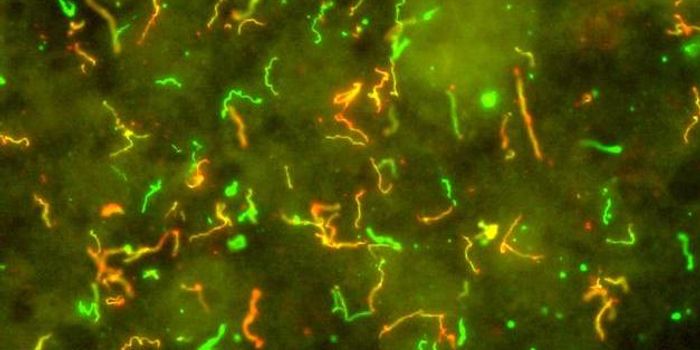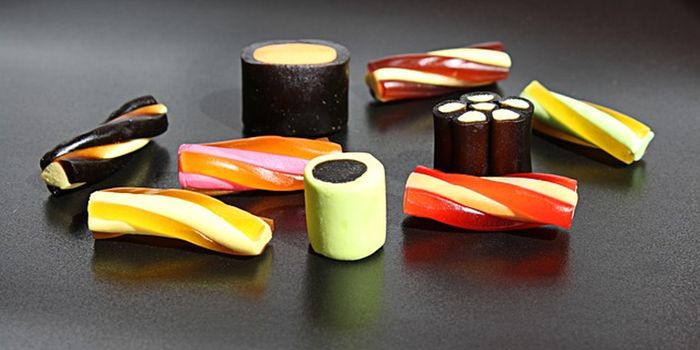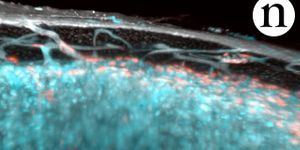Implications of Vibrio vulnificus Infections in Healthcare
Vibrio vulnificus is a bacterium found in warm, saltwater areas worldwide, and filter feeders such as oysters, mussels, scallops, and clams. It is a curved, oxidase positive, gram-negative bacillus that is halophilic (requires salt to survive) and is in the family Vibrionaceae which includes Vibrio, Plesiomonas, and Aeromonas. This organism only infects humans and other primates; the first documented case of this disease was in 1979. In the United States, V. vulnificus is the leading cause of seafood-related deaths with a mortality rate of 15-30%.
V. vulnificus is an opportunistic pathogen infecting humans and has been found in coastal waters throughout the world in sediment, water, and a variety of seafood. In the United States, it is found in the coastal waters of the Gulf of Mexico, New England, and the Northern Pacific. The most favorable survival conditions for the bacterium is low-to-moderate salinity (15-25 parts per thousand. The consumption of seafood (primarily oysters) can result in a severe, uncontrollable, systemic infection. There are many factors involved in its virulence and pathogenicity. One key feature that has been noted in its virulence is that serum iron levels are increased in those infected. Assays performed on mice showed that the infectious dose of V. vulnificus directly correlated with the serum iron concentrations and injecting mice with iron before infection significantly lowered the LD50 and increased the mortality rate to 100%. Because the availability of free iron is absent in humans, the organism produces siderophores, which take the iron from transferrin or lactoferrin and deliver it to the bacterium. Other virulence factors involved in the infectious process of V. vulnificus include resistance to acid in the stomach, the formation of a capsule, the ability to block the complement cascade, cell-to-cell attachment, and motility mechanisms.
Patients who have eaten raw oysters and who have acquired an infection with V. vulnificus, present with abrupt gastrointestinal symptoms such as vomiting, diarrhea, and abdominal pain and may also have fever, chills, or shock. It can also be contracted through the contact of a wound with warm seawater. People who have chronic liver diseases such as alcoholic cirrhosis or hepatitis B or C and those whose immune systems are compromised are much more likely to develop an infection with V. vulnificus than are healthy people. Septicemia, the presence of bacteria in the blood, is the most common cause of death from consuming seafood in the United States. These symptoms may first become evident through a skin condition called purpura fulminant, a clotting disorder, which can become deadly quickly if treatment is not begun immediately with antibiotics. V. vulnificus can also cause necrotizing fasciitis that progresses more rapidly than that of methicillin-resistant Staphylococcus aureus and methicillin-sensitive Staphylococcus aureus.
A differential diagnosis of V. vulnificus infection is made through gram stain, bacterial culture, and susceptibility testing. These can be obtained from stool, blood, wound tissue or exudates, peritoneal fluid, and ocular fluid. Since most clinical laboratories do not routinely culture for Vibrio and since it requires a special culture media (TCBS agar), the physician who suspects this organism needs to place a special request so that it can be ruled out. If it is suspected that the patient has this bacterium, antibiotic therapy should be started immediately. The sooner treatment is begun, the higher the rate of survival. It is recommended that anyone suspected of having a V. vulnificus infection is started on doxycycline 200 mg twice daily either orally or intravenously and a third-generation cephalosporin such as cefotaxime given at 2 g intravenously every four hours. Once the culture and susceptibility results have come back, and only Vibrio is involved in the infection, the use of antibiotic monotherapy can be initiated. Patients who have necrotizing fasciitis will need supportive therapy, also, to maintain blood pressure and an open airway as well as probable debridement of the wound with possible limb amputation.
Ho states that “between 1998 and 2010, the incidence of Vibrio infections in the United States increased by more than 115%. The CDC estimates that 8,000 Vibrio infections (100 V. vulnificus, 4,500 V. parahaemolyticus and approximately 100 deaths related to Vibrio infections may occur annually in the United States.” V. vulnificus is the most costly marine-borne pathogen, at $233 million, in the United States. Internationally, V. vulnificus is reported in Japan, Taiwan, China, Hong Kong, Korea, Italy, and Israel possibly due to the high incidence of hepatitis B in these areas. Even though Japan has a high rate of V. vulnificus septicemia with 425 cases annually, only 15% of emergency room physicians there have a basic understanding of the nature of the infection.
Among all the food-borne diseases, infection with V. vulnificus has the highest mortality rate. And patients who had cirrhosis of the liver and consumed raw oysters were 80 times more likely to be infected with this organism and 200 times more likely to die from the infection than healthy people. The number of oysters eaten does not predict mortality and does not affect the time it takes for symptoms to develop. People who have underlying medical conditions such as cirrhosis, malignancies, end-stage renal disease, or autoimmune disorders are more likely to contract this infection if raw seafood is consumed. There is no distinction between race, age, or sex. In a report by Kotton et al., a case of necrotizing fasciitis caused by V. vulnificus was seen in a 62-year-old man with nonalcoholic liver cirrhosis who had undergone an acupuncture procedure in Israel. The patient worked at a fish hatchery, and it was determined that the organism had survived on his skin for a day before having the procedure performed. It is the first ever case reported in the literature of necrotizing fasciitis caused by V. vulnificus through acupuncture.
For uncomplicated gastroenteritis, most people experience a full recovery with no residual symptoms. In those who are lucky enough to survive fulminant infection, the recovery period is much longer, but again, there are usually no lasting sequelae. Prevention of this disease is through the careful handling of and the avoidance of eating raw seafood, especially if immunocompromised. There is no vaccine available for this organism, so precautionary measures are advised. All seafood should be cooked thoroughly with raw and cooked foods being separated. Aquatic activities around warm, coastal areas should be avoided if there is an open wound present.
-
APR 30, 2024Immuno-Oncology Virtual Event Series 2024
-
MAY 07, 20243rd International Biosecurity Virtual Symposium
-
JUN 06, 2024The Future of Scientific Conferencing
- See More

















































